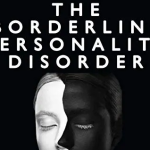Understanding Disruptive Mood Dysregulation Disorder (DMDD): Symptoms, Causes, and Treatment

Disruptive Mood Dysregulation Disorder (DMDD) is a relatively recent addition to the psychiatric diagnostic landscape. It was introduced in the fifth edition of the Diagnostic and Statistical Manual of Mental Disorders (DSM-5) in 2013.
DMDD is a condition that primarily affects children and adolescents, and its symptoms can be confusing and challenging to identify. In this article, we will explore what DMDD is, its symptoms, potential causes, and available treatments to help gain a better understanding of this disorder.
What is Disruptive Mood Dysregulation Disorder (DMDD)?
Disruptive Mood Dysregulation Disorder is a mental health condition characterized by severe temper outbursts and a consistently irritable or angry mood. It was introduced into the DSM-5 as a way to address concerns about the overdiagnosis of bipolar disorder in children and adolescents. DMDD helps differentiate between typical childhood irritability and more severe mood-related disturbances.
Symptoms of DMDD
1. Severe Temper Outbursts: Children and adolescents with DMDD experience frequent, severe temper outbursts that are out of proportion to the situation. These outbursts can be verbal or physical and are often described as tantrums or rages.
2. Persistent Irritability: DMDD is characterized by a chronic state of irritability or anger that persists for most of the day and on most days. This mood is present between outbursts and is a key symptom of the disorder.
3. Age of Onset: DMDD typically begins in childhood, and its symptoms must be present for at least 12 months to make a diagnosis. The condition is usually diagnosed between the ages of 6 and 18.
4. Impairment in Daily Functioning: The mood disturbances and temper outbursts associated with DMDD significantly impair a child’s or adolescent’s social, academic, and family functioning. They may have difficulty making and maintaining friendships and struggle with academic performance.
5. Absence of Manic or Hypomanic Episodes: One crucial criterion for DMDD is that the symptoms should not be better explained by another mental disorder, such as bipolar disorder. There should be no evidence of manic or hypomanic episodes.
Causes of DMDD
The exact causes of DMDD are not fully understood, but several factors may contribute to the development of this disorder:
1. Genetic Factors: Research suggests that there may be a genetic component to DMDD, as it tends to run in families. However, no specific genes have been definitively linked to the disorder.
2. Neurobiological Factors: Some studies have indicated that abnormalities in brain regions responsible for emotional regulation and impulse control may be involved in DMDD. Dysregulation in neurotransmitter systems, such as serotonin and dopamine, might also play a role.
3. Environmental Factors: Environmental stressors, such as early childhood trauma, exposure to family conflict, or a history of abuse, can increase the risk of developing DMDD. These factors can contribute to a child’s emotional dysregulation.
4. Cognitive and Psychological Factors: Some children may have inherent difficulties in regulating their emotions, which can lead to heightened irritability. Cognitive vulnerabilities, such as a negative cognitive bias or poor emotional coping strategies, may also be involved.
It’s important to note that DMDD is a complex condition, and its development is likely influenced by a combination of these factors. Further research is needed to better understand the interplay of genetics, brain structure and function, and environmental influences in the development of DMDD.
Diagnosis of DMDD
Diagnosing DMDD can be challenging due to the overlap of symptoms with other mood disorders and externalizing behaviors. A comprehensive assessment is necessary, which typically involves the following steps:
1. Clinical Evaluation: A mental health professional, such as a child psychiatrist or psychologist, will conduct a thorough clinical evaluation. They will gather information from the child, parents, and teachers to assess the child’s mood, behavior, and functioning.
2. Differential Diagnosis: The clinician will rule out other conditions that could mimic DMDD, such as bipolar disorder, attention-deficit/hyperactivity disorder (ADHD), and oppositional defiant disorder (ODD).
3. Duration and Severity Assessment: To meet the criteria for DMDD, the symptoms must be present for at least 12 months and cause significant impairment in daily life.
4. Age Assessment: DMDD is typically diagnosed in children and adolescents between the ages of 6 and 18.
5. Functional Impairment: The assessment will focus on how DMDD symptoms impact the child’s relationships, school performance, and family life.
6. Collateral Information: Information from multiple sources, including parents, teachers, and the child, is essential for a comprehensive assessment.
Treatment for DMDD
The management of DMDD involves a combination of therapeutic approaches to help children and adolescents develop better emotional regulation and coping skills. Here are some of the common treatment options:
1. Psychotherapy:
a. Cognitive-Behavioral Therapy (CBT): CBT can help children and adolescents identify and modify negative thought patterns, develop coping strategies, and improve emotional regulation.
b. Parent-Child Interaction Therapy (PCIT): PCIT focuses on improving parent-child relationships, teaching effective discipline strategies, and enhancing communication between parents and children.
c. Family Therapy: Family therapy can address conflicts and communication issues within the family and provide support for parents in managing a child with DMDD.
2. Medication:
a. While medication is not typically the first-line treatment for DMDD, in some cases, it may be considered, especially if symptoms are severe and other treatments have been unsuccessful. Medications like atypical antipsychotics or mood stabilizers may be prescribed under the supervision of a qualified psychiatrist.
3. School-Based Interventions:
a. Educational support is vital for children with DMDD. Teachers and school counselors can work with the child to create an Individualized Education Plan (IEP) or a 504 Plan to address academic and behavioral needs.
4. Support Groups:
a. Support groups can provide children and parents with an opportunity to share their experiences, learn from others facing similar challenges, and receive emotional support.
5. Lifestyle and Coping Strategies:
a. Encouraging a healthy lifestyle, including regular exercise, proper nutrition, and adequate sleep, can contribute to better mood regulation.
b. Teaching stress management techniques, such as deep breathing exercises and mindfulness, can help children and adolescents cope with their emotions more effectively.
It is important to note that the choice of treatment should be tailored to the individual needs of the child, and a multidisciplinary approach involving mental health professionals, educators, and parents is often the most effective way to address DMDD.
Coping with DMDD
Coping with a child or adolescent with DMDD can be challenging for parents and caregivers. Here are some strategies to help navigate this difficult journey:
1. Seek Professional Help: Consult with a mental health professional who specializes in child and adolescent mental health. They can provide a proper diagnosis and guide you through the treatment process.
2. Education: Learn about DMDD and its symptoms to better understand your child’s struggles. Knowledge can help reduce feelings of frustration and helplessness.
3. Communication: Open and honest communication with your child is crucial. Encourage them to express their feelings and concerns while maintaining a supportive and non-judgmental atmosphere. Let your child know that you are there to listen and support them.
4. Consistency: Establish clear and consistent routines at home to provide structure and stability. Predictability can help reduce anxiety and outbursts.
5. Behavioral Strategies: Work with a therapist or counselor to develop and implement behavioral strategies to manage your child’s emotional dysregulation. These strategies can help your child learn to recognize and control their emotions.
6. Be Patient: Dealing with DMDD can be emotionally taxing, and it’s essential to remain patient. Understand that change may take time, and setbacks are a normal part of the process.
7. Self-Care: Caring for a child with DMDD can be physically and emotionally draining. Make sure to prioritize your own self-care and seek support from friends, family, or support groups.
Prognosis for DMDD
The prognosis for DMDD varies from one individual to another. Early diagnosis and intervention are critical for better outcomes. With appropriate treatment, many children and adolescents with DMDD can learn to manage their symptoms effectively and experience improved functioning.
It’s important to note that DMDD can sometimes co-occur with other mental health conditions, such as anxiety or depression, which may require additional treatment. Regular follow-up with mental health professionals is essential to monitor progress and make any necessary adjustments to the treatment plan.
Conclusion
Disruptive Mood Dysregulation Disorder is a complex and often misunderstood condition that primarily affects children and adolescents. It presents with severe temper outbursts and persistent irritability, which can significantly impact a child’s daily life and well-being. Understanding the symptoms, potential causes, and available treatment options is essential for parents, caregivers, and educators to provide the necessary support and help children and adolescents with DMDD lead fulfilling lives.
While the exact causes of DMDD remain the subject of ongoing research, a combination of genetic, neurobiological, environmental, and psychological factors likely contribute to its development. Accurate diagnosis and early intervention are crucial for improved outcomes, and a multidisciplinary approach involving therapy, medication (in some cases), and support from schools and families can help children with DMDD develop better emotional regulation and coping skills.
Coping with DMDD can be challenging, but with patience, education, communication, and professional support, families and caregivers can provide the necessary assistance to help children and adolescents with DMDD navigate their emotional difficulties and build a brighter future. Additionally, raising awareness about DMDD and reducing the stigma associated with childhood mental health conditions is essential to ensure that affected children receive the support and understanding they need.





